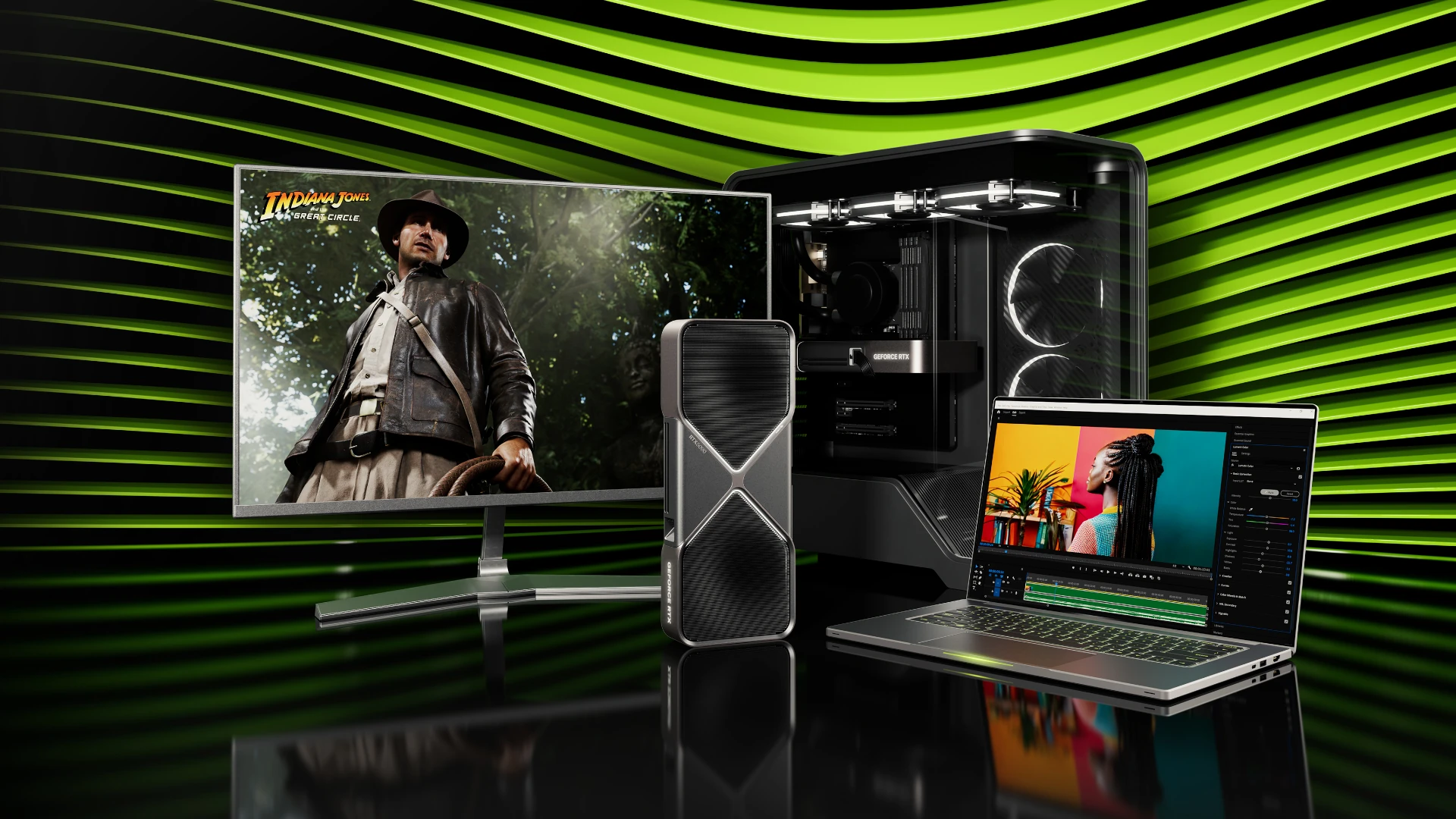At CES 2025 in Las Vegas, Nvidia Corporation, a US-based technology leader, unveiled its latest series of AI-powered graphics chips, setting a new benchmark in the competitive tech industry. These advancements are poised to bring supercomputer-level performance to consumer laptops at accessible prices, marking a significant shift in the landscape of AI-driven computing.
On Tuesday, Nvidia introduced the GeForce RTX™ 50 Series Desktop and Laptop GPUs, designed for gamers, creators, and developers. Among them, the flagship GeForce RTX 5090 GPU stands out as the fastest to date, boasting 92 billion transistors and delivering a staggering 3,352 trillion AI operations per second (TOPS).
The GeForce RTX 5090 is priced at $1,999, while the RTX 5080 (1,800 AI TOPS) costs $999, the RTX 5070 Ti (1,400 AI TOPS) is $749, and the RTX 5070 (1,000 AI TOPS) is $549. These GPUs are powered by Nvidia’s Blackwell architecture, fifth-generation Tensor Cores, and fourth-generation RT Cores, offering groundbreaking features such as neural shaders, digital human rendering, and advanced geometry and lighting capabilities.
For portable computing, Nvidia’s GeForce Blackwell technology brings desktop-level features to laptops, enhancing their graphics performance and efficiency. Laptops equipped with the GeForce RTX 5090 and other RTX 50 Series models will be available in the first half of this year from leading manufacturers, including Acer, ASUS, Dell, HP, Lenovo, MSI, and Razer.
The GPUs feature Nvidia’s proprietary Deep Learning Super Sampling (DLSS) 4, an AI-driven technology that enhances gaming performance by lowering rendering resolutions and using artificial intelligence to upscale images in real-time. With DLSS 4 and the newly introduced multi-frame generation feature, the RTX 50 Series enables ray-traced gaming at 4K resolution and up to 240 frames per second, delivering a significant leap in graphics quality and speed.
Nvidia has been at the forefront of innovation since launching its GeForce RTX series in 2018, which introduced real-time ray tracing to graphics technology. These latest advancements build on that legacy, providing unmatched AI rendering capabilities for modern computing needs.
Meanwhile, other tech giants are also pushing the boundaries of innovation. In December, Google revealed its quantum chip, Willow, which can perform a benchmark computation in under five minutes—a task that would take the world’s fastest supercomputers 10 septillion years, according to the company. This milestone underscores the transformative potential of quantum computing in addressing previously insurmountable challenges in AI and other domains.
As the tech industry continues to develop AI-powered and quantum technologies, consumers can expect an influx of high-performance, affordable products that will redefine the way they interact with everyday technology.





